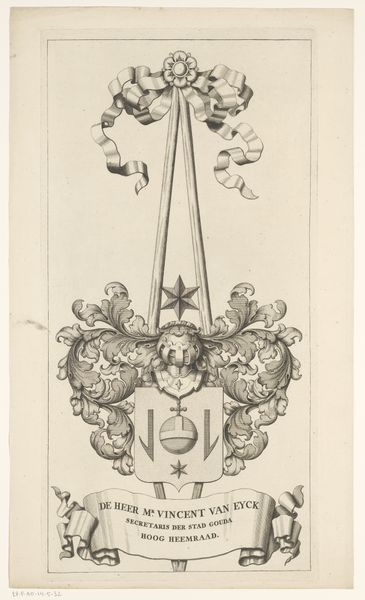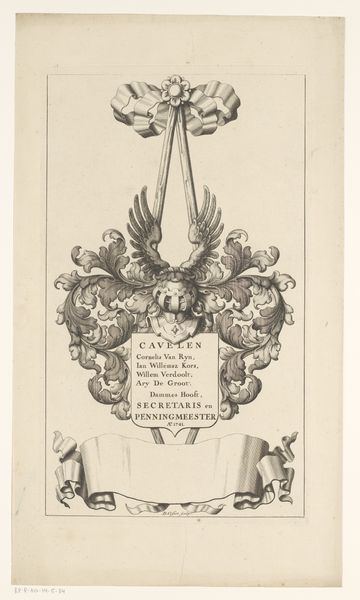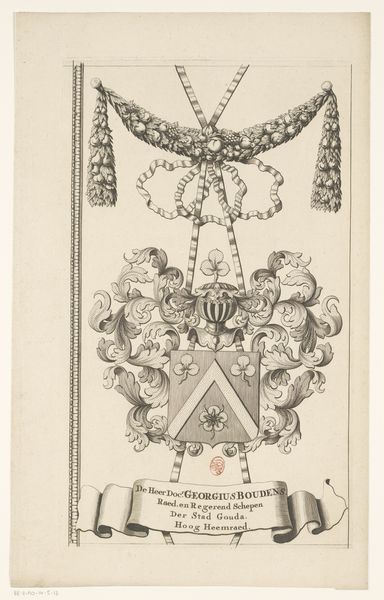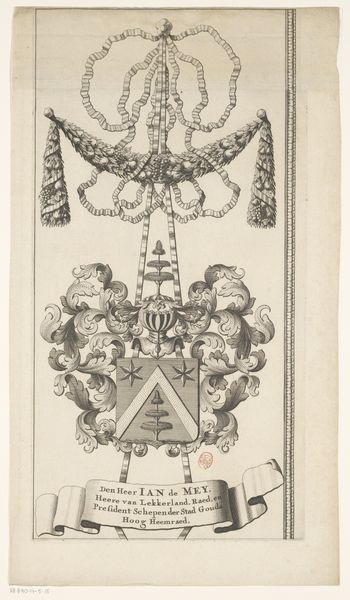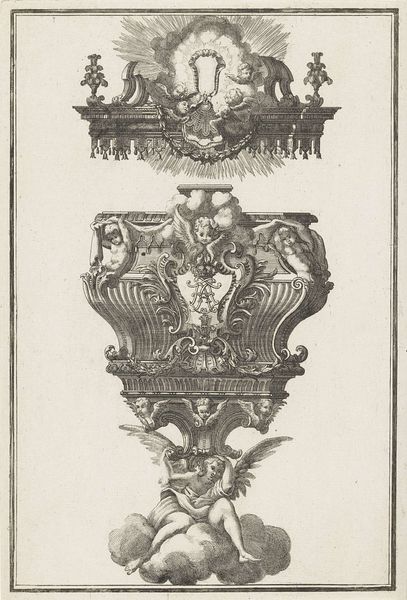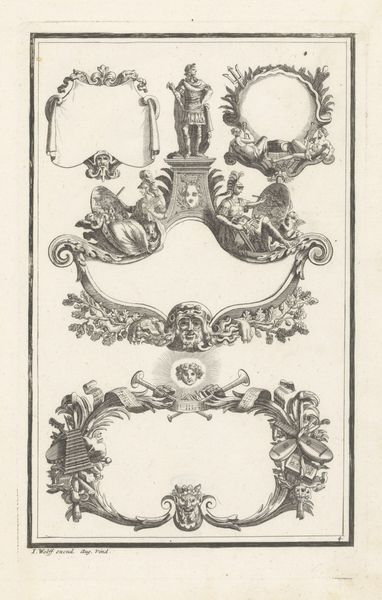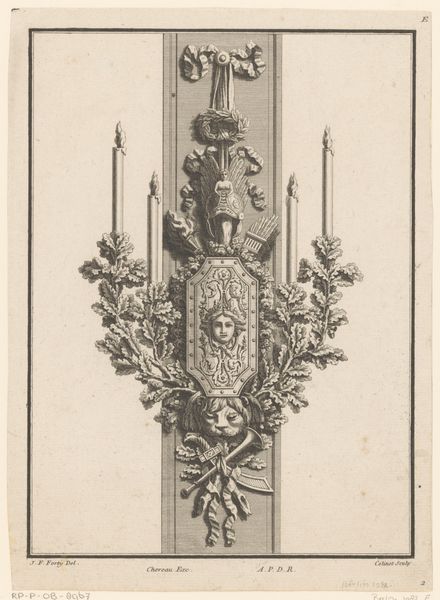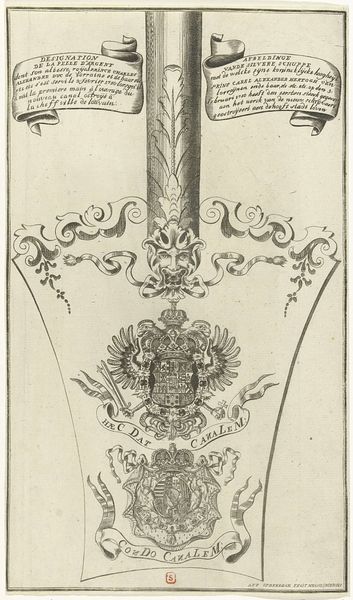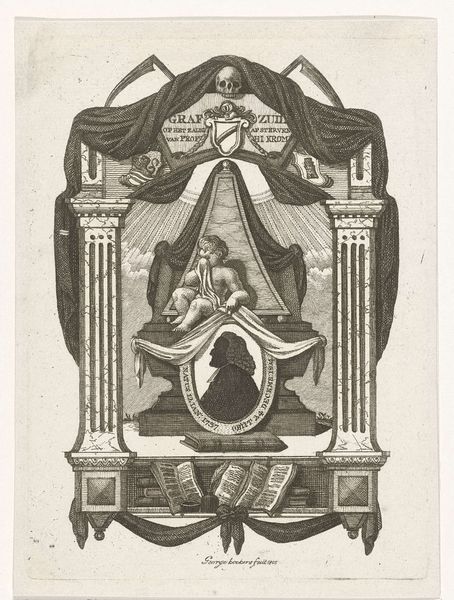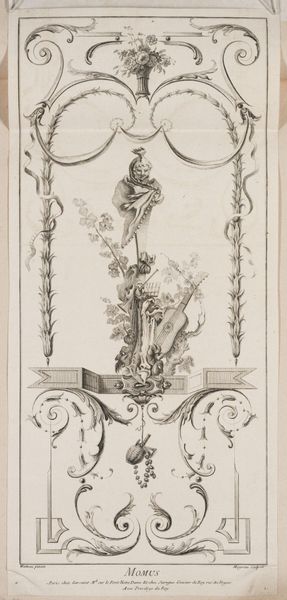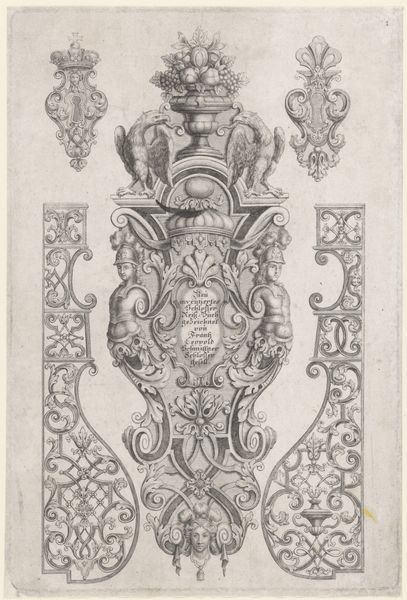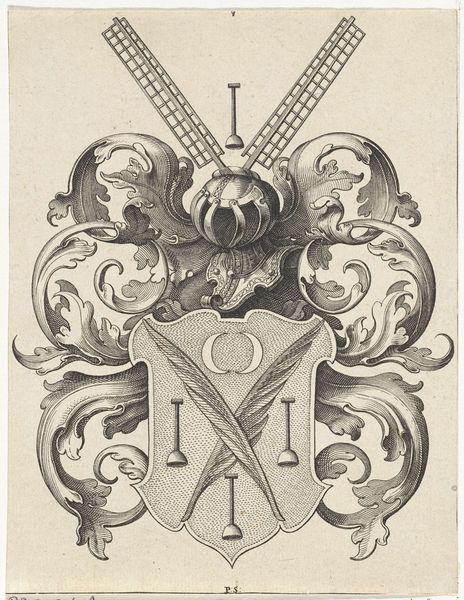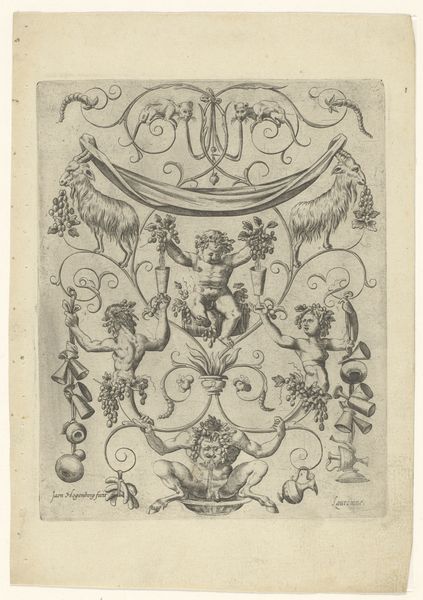
Kaart van het Hoogheemraadschap van de Krimpenerwaard (deel wapenrand) 1683 - 1741
0:00
0:00
print, engraving
#
baroque
# print
#
old engraving style
#
geometric
#
engraving
Dimensions: height 528 mm, width 265 mm
Copyright: Rijks Museum: Open Domain
Editor: Here we have a print titled "Kaart van het Hoogheemraadschap van de Krimpenerwaard (deel wapenrand)", dating somewhere between 1683 and 1741 and attributed to David Coster. It's an engraving, seemingly in the Baroque style. I'm immediately struck by the intricate detail, particularly in the ribbons and foliage surrounding the coat of arms. What elements of this work stand out to you? Curator: Indeed. Let us examine the visual properties closely. Observe the stark contrast created by the linear quality of the engraving. Note how the artist employs hatching and cross-hatching techniques to construct the forms and suggest a tonal range despite the absence of color. What is the effect of that restricted palette, or rather the absence of color, on your perception? Editor: It creates a sense of formality, perhaps even austerity. But there’s still a flourish to the overall design... all those curving lines and textures keep it from feeling too severe. Curator: Precisely. And consider the composition. The coat of arms is centrally positioned, flanked by decorative elements. The symmetrical arrangement of the ribbons and foliage lends a sense of balance, yet it also guides the viewer's eye toward the central heraldic shield. What meaning do you draw from the interplay of geometric forms and organic shapes? Editor: It could represent the relationship between human order and natural abundance, perhaps mirroring the function of the Water Board it depicts? I see how the composition creates visual harmony, which elevates the mundane into something dignified and worthy of attention. Curator: Well articulated. The meticulous execution speaks to the values of precision and control. However, I'd point out that it's imperative to engage with the image from a critical and theoretical perspective; that such "harmony" does not serve merely to elevate "the mundane," but to reinforce hierarchical social and power relations. What new insight do you take with you? Editor: I'm going to look closely at the formal elements of every artwork before I make assumptions about broader contextual meaning. The image needs to be analyzed from many viewpoints to unveil any bias or hidden intent that would otherwise be invisible on its surface. Thank you for your insight!
Comments
No comments
Be the first to comment and join the conversation on the ultimate creative platform.
